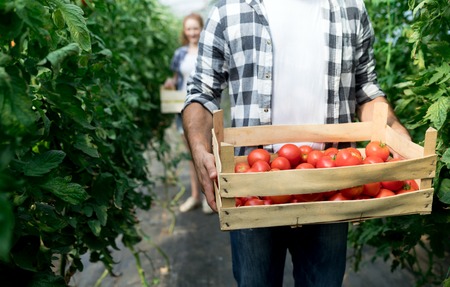Understanding Garden Waste in the UK Context
For the British gardener committed to sustainability, it is essential to first grasp what garden waste truly encompasses within the UK context. Garden waste refers to organic materials generated from maintaining gardens, allotments, and green spaces. Common examples include grass clippings, fallen leaves, hedge trimmings, branches, weeds, dead plants, and even windfall fruit. These materials may seem innocuous at first glance, but their volume can quickly accumulate, particularly during peak growing seasons.
Common Sources of Garden Waste
Across Britain’s varied landscapes—from suburban lawns to rural estates and urban community gardens—the primary sources of garden waste remain consistent. Lawns contribute the bulk through regular mowing; flowerbeds and borders generate prunings and spent plants; vegetable plots offer up stalks, old growth, and surplus produce. Trees and shrubs shed twigs and leaves throughout the year. Even hard landscaping projects can produce organic offcuts if soil or turf is removed. Recognising these sources enables gardeners to anticipate waste generation and plan accordingly for its management.
Why Proper Management Matters
The importance of managing garden waste responsibly extends beyond mere tidiness. Inappropriate disposal—such as burning or landfill—can contribute to greenhouse gas emissions and undermine local biodiversity. Conversely, effective management practices help reduce environmental impact by promoting recycling of nutrients and supporting natural ecosystems. With increasing emphasis on sustainability across the UK, proper garden waste management aligns with national environmental goals and helps preserve the cherished British landscape for future generations.
2. Local Authority Collection: Rules and Best Practices
Effective garden waste management begins with understanding your local authoritys collection services. Across the UK, councils have developed specific guidelines to ensure that organic garden waste is collected efficiently and sustainably. Adhering to these rules not only keeps neighbourhoods tidy but also helps divert green waste from landfill, supporting national sustainability goals.
Council Guidelines: What Can and Cannot Go in Your Green Bin
| Accepted Waste | Not Accepted |
|---|---|
| Grass clippings Shrub and hedge trimmings Leaves and flowers Small branches and twigs Weeds (non-invasive) |
Soil and rubble Plastic bags Plant pots Food waste Japanese knotweed or other invasive species |
Councils typically provide a green-lidded bin or reusable sacks for garden waste. It is crucial to follow the specific guidance provided by your local authority regarding which materials are suitable for collection. Placing non-permitted items in your green bin may result in the entire load being rejected.
Collection Schedules: Staying on Track
The frequency of garden waste collection varies across the UK. Most councils operate fortnightly collections during peak growing seasons (spring through autumn), scaling back or pausing during winter months. You can usually find your collection calendar on your council’s website or through a local waste management app.
| Region | Typical Collection Frequency | Service Months |
|---|---|---|
| England (South) | Every 2 weeks | March – November |
| Scotland & North England | Every 3 weeks | April – October |
| Northern Ireland & Wales | Every 2–4 weeks (varies) | April – November |
Best Practices for Bin Usage and Preparation
- Avoid Overfilling: Ensure the lid can close fully; overfilled bins may not be collected.
- No Contaminants: Remove plastic plant labels, pots, or wire ties from your cuttings.
- Tidy Presentation: Bundle long branches (under 10cm diameter) and place them neatly inside the bin.
- No Bagging: Place loose material directly into the bin—most councils do not accept bagged garden waste unless using council-approved compostable liners.
- Date Awareness: Put your bin out by 7am on collection day to avoid missed pick-ups.
Navigating Local Variations in Regulations
Council policies are subject to change, so always check for service updates, especially after public holidays or during adverse weather. Some authorities offer a paid subscription service for garden waste collection, while others include it as part of general council tax. To remain compliant, consult your local authority’s website or contact their environmental services team for clarification on current regulations.

3. Home Composting: Techniques and Benefits
Traditional British Composting Methods
For generations, British gardeners have relied on simple yet effective composting techniques such as the classic compost heap or bin. Traditionally, a corner of the garden is designated for piling up grass clippings, prunings, vegetable peelings, and fallen leaves. The heap is turned periodically with a garden fork to aerate the material, which speeds up decomposition. Many allotment holders favour wooden slatted bins that allow air circulation while keeping compost neatly contained—a practical solution for typical British gardens with limited space.
Modern Approaches to Home Composting
Recent years have seen an increase in innovative composting solutions tailored to urban living and smaller outdoor spaces. Closed plastic compost bins are now widely available at local councils or garden centres across the UK. These bins help control moisture and temperature, speeding up the composting process and reducing odours. Tumbling composters—rotatable barrels on stands—make turning easier and encourage even breakdown of organic waste. For those keen on sustainability, wormeries (vermicomposting) are gaining popularity; they use tiger worms to process kitchen scraps into nutrient-rich worm castings.
What Can You Compost?
Understanding what goes into your compost heap is key to producing quality compost. Suitable materials include most garden waste (grass cuttings, hedge trimmings, leaves), fruit and vegetable peelings, coffee grounds, tea bags (plastic-free), eggshells, cardboard egg boxes, shredded newspaper, and paper towels. Avoid adding cooked food, meat, dairy products, diseased plants, perennial weeds like bindweed or Japanese knotweed, and pet waste—as these can attract pests or introduce pathogens.
Tips for Producing Rich Garden Compost
- Balance your greens and browns: Aim for a roughly equal mix of nitrogen-rich greens (e.g., grass clippings) and carbon-rich browns (e.g., dried leaves or shredded paper).
- Aerate regularly: Turning your heap every few weeks introduces oxygen and speeds up decomposition.
- Maintain moisture: Compost should feel like a wrung-out sponge—not too dry or soggy. In drier spells, sprinkle water if needed.
- Chop larger items: Breaking down woody stems or large pieces helps them decompose faster.
- Cover your heap: Use old carpet or tarpaulin to retain warmth and moisture during cooler British months.
The Benefits for Sustainable British Gardens
Home composting not only diverts valuable resources from landfill but also provides you with rich, peat-free soil conditioner perfect for flower beds, veg patches, and containers. By returning nutrients to your garden’s soil in this closed-loop system, you’re supporting local biodiversity and reducing your environmental footprint—a true hallmark of the sustainable British gardener.
4. Creative Reuse and Repurposing of Garden Waste
Embracing the sustainable ethos deeply rooted in British gardening traditions, reusing and repurposing garden waste is both environmentally sound and highly practical. From grass clippings to woody branches and autumn leaves, every byproduct can be transformed into valuable resources for your garden and local wildlife.
Mulching: The Cornerstone of Sustainable Gardens
Mulching is a time-honoured method in British gardens, helping to retain soil moisture, suppress weeds, and enrich the earth. Grass clippings can be spread in thin layers around flower beds or vegetable patches. Similarly, shredded branches and leaves can be used as mulch under trees and shrubs, breaking down gradually to return nutrients to the soil.
Wildlife Habitats: Supporting Native Species
Many British gardeners create wildlife havens by repurposing garden waste. Stacked logs and twig piles provide shelter for hedgehogs, frogs, and beneficial insects. Leaf litter left in quiet corners supports overwintering butterflies and beetles, contributing to local biodiversity in line with UK conservation priorities.
Composting: Traditional and Modern Approaches
Composting remains a cornerstone of British garden sustainability. Grass clippings, leaves, and even small prunings break down efficiently in a well-managed compost heap or bin. Consider layering “greens” (clippings) with “browns” (woody material) for optimal decomposition—a practice recommended by the Royal Horticultural Society.
Common Garden Waste Reuse Ideas
| Material | Reuse Method | British Tradition/Benefit |
|---|---|---|
| Grass Clippings | Mulch, Compost | Moisture retention; soil enrichment |
| Branches & Twigs | Log piles, pea sticks, path edging | Wildlife habitat; traditional support structures for peas/beans |
| Leaves | Leaf mould, compost, wildlife cover | Nutrient-rich soil conditioner; hibernation sites for insects |
| Woody Prunings | Chipped mulch, dead hedges | Sustainable fencing; habitat corridors for birds & mammals |
Circular Gardening: A Legacy of Resourcefulness
The concept of circular gardening—where nothing goes to waste—has long been practised in Britain. Dead hedges constructed from prunings not only mark boundaries but also provide ecological corridors. Even chipped wood from tree maintenance can be used on paths or as mulch, minimising landfill contributions.
By thoughtfully repurposing garden waste through these creative strategies, British gardeners uphold their heritage of resourcefulness while championing sustainability for future generations.
5. Avoiding Common Pitfalls and Contaminants
Understanding the Risks of Contamination
For the sustainable British gardener, maintaining the integrity of your garden waste is crucial. Contaminated green waste not only undermines your composting efforts but can also disrupt local council collection schemes and impact wider recycling processes. Understanding what should never be included in your garden waste bins or compost heaps is a vital step towards effective, eco-friendly gardening.
Items to Exclude from Garden Waste Bins
Local authorities across the UK have strict guidelines on what can be placed in garden waste collections. Never include:
- Plastic bags and plant pots: These non-biodegradable items hinder composting and must be disposed of separately.
- Soil, stones, and rubble: Heavy materials damage processing machinery and are not suitable for green waste facilities.
- Household rubbish: General waste, food scraps, or pet litter introduce contaminants that are difficult to remove at later stages.
- Treated wood or timber: Preservatives and chemicals can leach into the compost, harming soil health and wildlife.
Avoiding Compost Heap Hazards
Your home compost heap is best kept free from certain problematic substances. Do not add:
- Diseased plant material: Pathogens can survive the composting process, risking reinfection of your garden plants.
- Pernicious weeds: Plants like Japanese knotweed or bindweed may regrow even after composting.
- Cooked foods and meat: These attract vermin and cause unpleasant odours; they are not suitable for garden composting in the UK climate.
Practical Tips for Preventing Contamination
- Always check local council guidance before placing items in your green bin—requirements can vary by borough.
- If unsure about an item, err on the side of caution and dispose of it through general waste or specialist recycling centres.
- Regularly clean out your green bin to avoid build-up of residues that could compromise future loads.
Cultivating Best Practice in Sustainable Gardening
By vigilantly excluding contaminants from both council bins and home compost heaps, you safeguard not only your own garden but contribute to the collective environmental health of your community. Proper sorting ensures that garden waste is transformed into high-quality compost—closing the loop for a greener Britain.
6. Sustainable Disposal Options Beyond the Kerbside
While kerbside collection is a convenient method for managing garden waste, sustainable British gardeners have several alternative options that further support eco-friendly practices and local community efforts. Exploring these alternatives can significantly reduce environmental impact and foster a sense of shared responsibility.
Local Recycling Centres
Many councils across the UK operate recycling centres equipped to accept green waste. These facilities are designed to process large quantities of garden debris, including branches, hedge trimmings, grass cuttings, and leaves. The collected materials are typically composted or transformed into soil improvers, which are then distributed back into the community or used in local parks and public spaces. Before visiting, it’s wise to check your local authoritys guidelines regarding accepted materials and opening hours.
Community Composting Schemes
Community composting schemes are gaining popularity throughout the UK as a grassroots solution to organic waste management. These initiatives bring together residents who lack space for home composting or those seeking to reduce their environmental footprint collectively. By pooling resources and sharing knowledge, communities can create high-quality compost that benefits communal gardens, allotments, and even local schools. Participation often fosters stronger neighbourhood ties and provides practical education on sustainable horticulture.
Green Waste Drop-off Points
Certain areas offer dedicated green waste drop-off points for residents who prefer not to use kerbside collections or require more frequent disposal options. These sites are particularly useful during peak gardening seasons when volumes of organic waste increase substantially. Typically managed by local authorities or environmental organisations, drop-off points ensure that garden waste is processed responsibly and does not end up in landfill.
Considerations for British Gardeners
When selecting a disposal option, consider accessibility, environmental impact, and the potential for material reuse within your community. Engaging with local schemes not only helps manage your own garden waste but also supports broader sustainability goals across the UK.
Final Thoughts
Sustainable disposal options beyond the kerbside empower British gardeners to make environmentally responsible choices tailored to their specific circumstances. By utilising local recycling centres, joining community composting schemes, or making use of green waste drop-off points, you contribute positively to both your immediate environment and the wider ecosystem.


